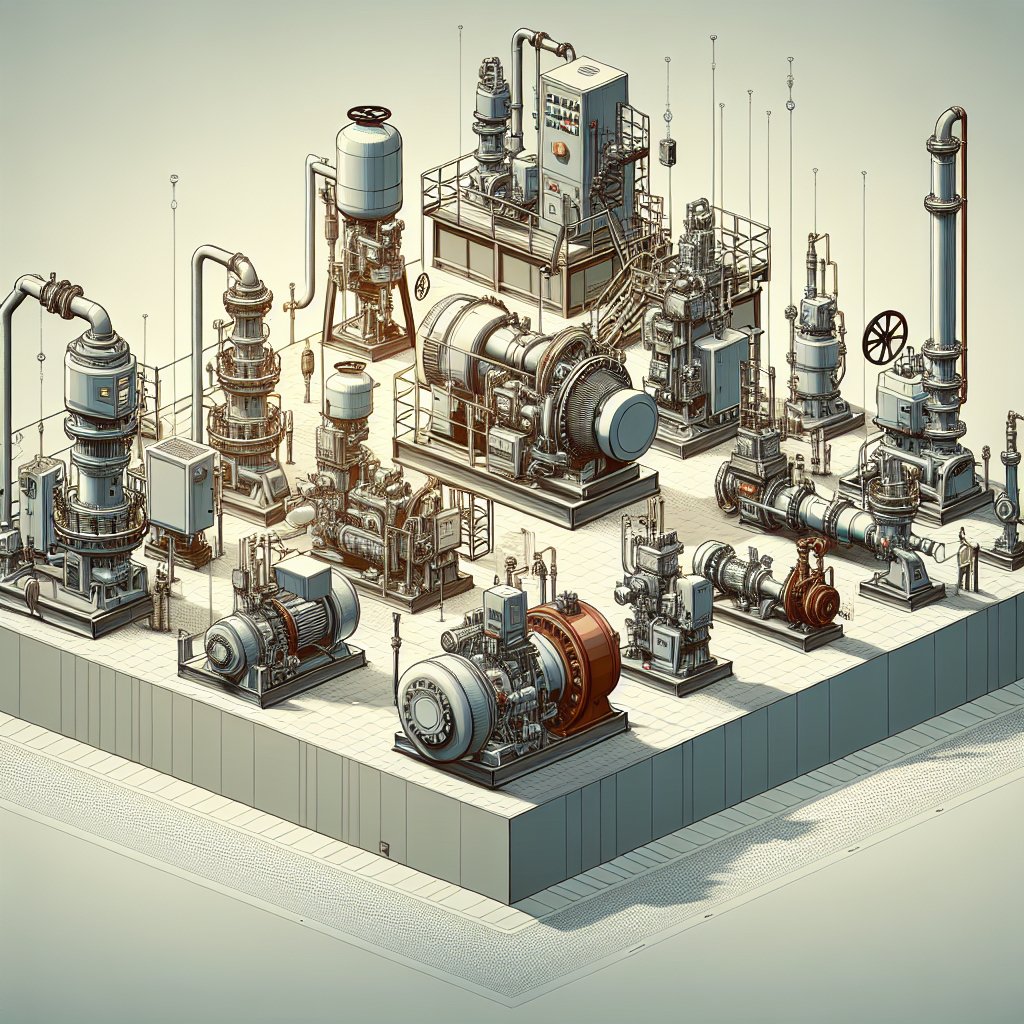
Industrial pumps are essential components in various sectors, from manufacturing to water treatment, and selecting the right type can significantly impact efficiency and cost-effectiveness. This article delves into the different types of industrial pumps, providing a comprehensive guide to help you make informed decisions based on your specific needs and applications.
Centrifugal Pumps
Centrifugal pumps are among the most commonly used types in industrial applications due to their simplicity and efficiency. They operate by converting rotational kinetic energy, typically from a motor, into hydrodynamic energy of fluid flow. The fluid enters the pump impeller along or near to the rotating axis and is accelerated by the impeller, flowing radially outward into a diffuser or volute chamber, from where it exits into the downstream piping system.
Advantages of Centrifugal Pumps
Centrifugal pumps offer several advantages, making them a popular choice in many industries:
- Efficiency: They are highly efficient for transferring large volumes of fluid at low to medium pressure.
- Simple Design: Their straightforward design makes them easy to maintain and repair.
- Cost-Effective: Generally, they have a lower initial cost compared to other types of pumps.
- Versatility: Suitable for a wide range of applications, including water supply, chemical processing, and food production.
Limitations of Centrifugal Pumps
Despite their advantages, centrifugal pumps have some limitations:
- Not Ideal for High Viscosity Fluids: They are less effective with high viscosity fluids, as the efficiency drops significantly.
- Priming Required: They require priming to start, which can be a disadvantage in certain applications.
- Limited Suction Lift: They have a limited suction lift capability, which can restrict their use in some scenarios.
Positive Displacement Pumps
Positive displacement pumps operate by trapping a fixed amount of fluid and then forcing (displacing) that trapped volume into the discharge pipe. They are ideal for applications requiring a constant flow rate regardless of pressure conditions.
Types of Positive Displacement Pumps
There are several types of positive displacement pumps, each suited to specific applications:
- Gear Pumps: Use gears to pump fluid by displacement. They are commonly used in hydraulic fluid power applications.
- Diaphragm Pumps: Utilize a diaphragm to move fluid. They are suitable for handling corrosive and abrasive fluids.
- Piston Pumps: Use pistons to move fluid. They are often used in high-pressure applications.
Advantages of Positive Displacement Pumps
Positive displacement pumps offer several benefits:
- Handling Viscous Fluids: They are highly effective with high viscosity fluids.
- Self-Priming: These pumps are self-priming, eliminating the need for additional priming equipment.
- Constant Flow: They provide a constant flow rate, making them ideal for precise dosing applications.
Limitations of Positive Displacement Pumps
However, positive displacement pumps also have some drawbacks:
- Complex Design: They have a more complex design, which can lead to higher maintenance costs.
- Pulsation: They can cause pulsation in the flow, which may require additional equipment to smooth out.
- Higher Initial Cost: Generally, they have a higher initial cost compared to centrifugal pumps.
Choosing the Right Pump for Your Application
Selecting the right pump involves considering several factors, including the type of fluid, flow rate, pressure requirements, and the specific application. Here are some guidelines to help you make the right choice:
Fluid Characteristics
Understanding the properties of the fluid you need to pump is crucial. Consider the viscosity, temperature, and chemical composition, as these factors will influence the type of pump that is most suitable.
Flow Rate and Pressure
Determine the required flow rate and pressure for your application. Centrifugal pumps are ideal for high flow rates at low pressures, while positive displacement pumps are better suited for low flow rates at high pressures.
Application Environment
Consider the environment in which the pump will operate. Factors such as temperature, humidity, and exposure to corrosive substances can affect pump performance and longevity.
Cost Considerations
Evaluate both the initial cost and the long-term operational costs. While centrifugal pumps may have a lower initial cost, positive displacement pumps might offer savings in terms of energy efficiency and maintenance over time.
Conclusion
Choosing the right industrial pump is a critical decision that can impact the efficiency and cost-effectiveness of your operations. By understanding the differences between centrifugal and positive displacement pumps, and considering the specific requirements of your application, you can make an informed choice that meets your needs. Whether you prioritize efficiency, cost, or versatility, there is a pump solution that can help you achieve your operational goals.

